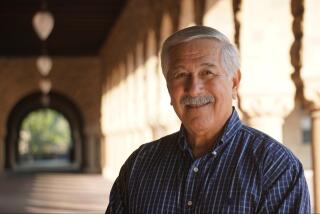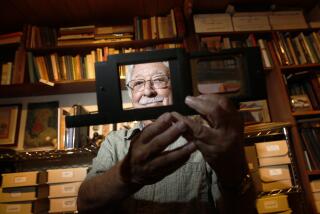True to Life : âRamona,â Reprinted 300 Times, Is Based on Actual Incident
In the fall of 1883, novelist Helen Hunt Jackson, writing from her home in Colorado, penned a letter to a friend in San Diego:
âI am going to write an Indian novel, the scene laid in So. California. I would rather you did not speak of this, as I shall keep it a secret, until the book is done.â
Less than a year later, Jacksonâs romantic novel, âRamona,â appeared in print. It has been a perennial bestseller ever since.
Set in the backcountry of northern San Diego County, the novel was inspired by several actual incidents, particularly the murder of an Indian by a white rancher in March, 1883.
Juan Diego, a Cahuilla Indian, lived with his wife and small child near the Cahuilla Indian Reservation in the San Jacinto Mountains. He was known in the region as a âlocoedâ Indian--a bit crazy at times but never dangerous.
One evening Juan returned home from his work as sheepshearer riding a strange horse. When his wife asked about the horse, Juan replied, in confusion, âWhere is my horse then?â He realized he had left his own mount in the corral and taken a similar horse by mistake. Juanâs wife, frightened by the error, said, âYou must take that horse right back; they will say you stole it.â
Juan never got the chance. Sam Temple, owner of the mistaken horse, rode up to the house and called out to Juan.
Temple âpoured out a volley of oaths, leveled his gun and shot him dead. After Juan had fallen on the ground Temple rode closer and fired three more shots in the body, one in the forehead, one in the cheek, and one in the wrist. . . . He then took his horse, which was standing tied in front of the house, and rode away.â
Temple surrendered himself to the local justice of the peace--a fellow rancher named Samuel Tripp. Before a jury of 12 white men, Temple claimed that Juan Diego had attacked him with a knife. The jurors visited the site of the killing and listened to Templeâs story. Eyewitness testimony from Juanâs wife and two other Indians was ignored. Ruling the action âjustifiable homicide,â Justice Tripp ordered the rancher released.
One juror summed up the popular feeling by saying, âI donât care whether the Indian had a knife or not. . . . Any man thatâd take a horse of mine and ride it up that mountain trail, Iâd shoot him wherever I found him.â The juror did concede that âTemple was to blame for firinâ into him after he was dead. That was mean, Iâll allow.â
In Helen Hunt Jacksonâs novel, Juan Diego served as the prototype for the tragic character Alessandro. The rancher Sam Temple was transformed into the evil Jim Ferrar. The wife of Juan became Ramona, heroine of the romance.
Until his death, Temple reveled in his notoriety as âthe man who killed Alessandro.â He also continued to skirmish with the law. In the next several years, Temple fought off charges in the courts of disturbing the peace, assault with a deadly weapon and attempted murder.
The historical Ramona (most likely a composite of several Indian women known by Jackson) was often identified as Ramona Lubo, who lived until the early 1920s. Renowned for her basketry, Ramona Luboâs work was exhibited at San Diegoâs California-Pacific International Exposition in 1935.
Since 1884, âRamonaâ has been reprinted more than 300 times. There have been four film versions of the story, and, in the community of Hemet (Riverside County), an outdoor stage play, the Ramona Pageant, has been produced annually since 1923.
Jackson wrote âRamonaâ in the hope that it would âstir people upâ and awaken public sympathy toward the plight of San Diego Indians. Instead, her novel fostered an enduring mythology of âthe Ramona country.â
More to Read
Sign up for our Book Club newsletter
Get the latest news, events and more from the Los Angeles Times Book Club, and help us get L.A. reading and talking.
You may occasionally receive promotional content from the Los Angeles Times.








